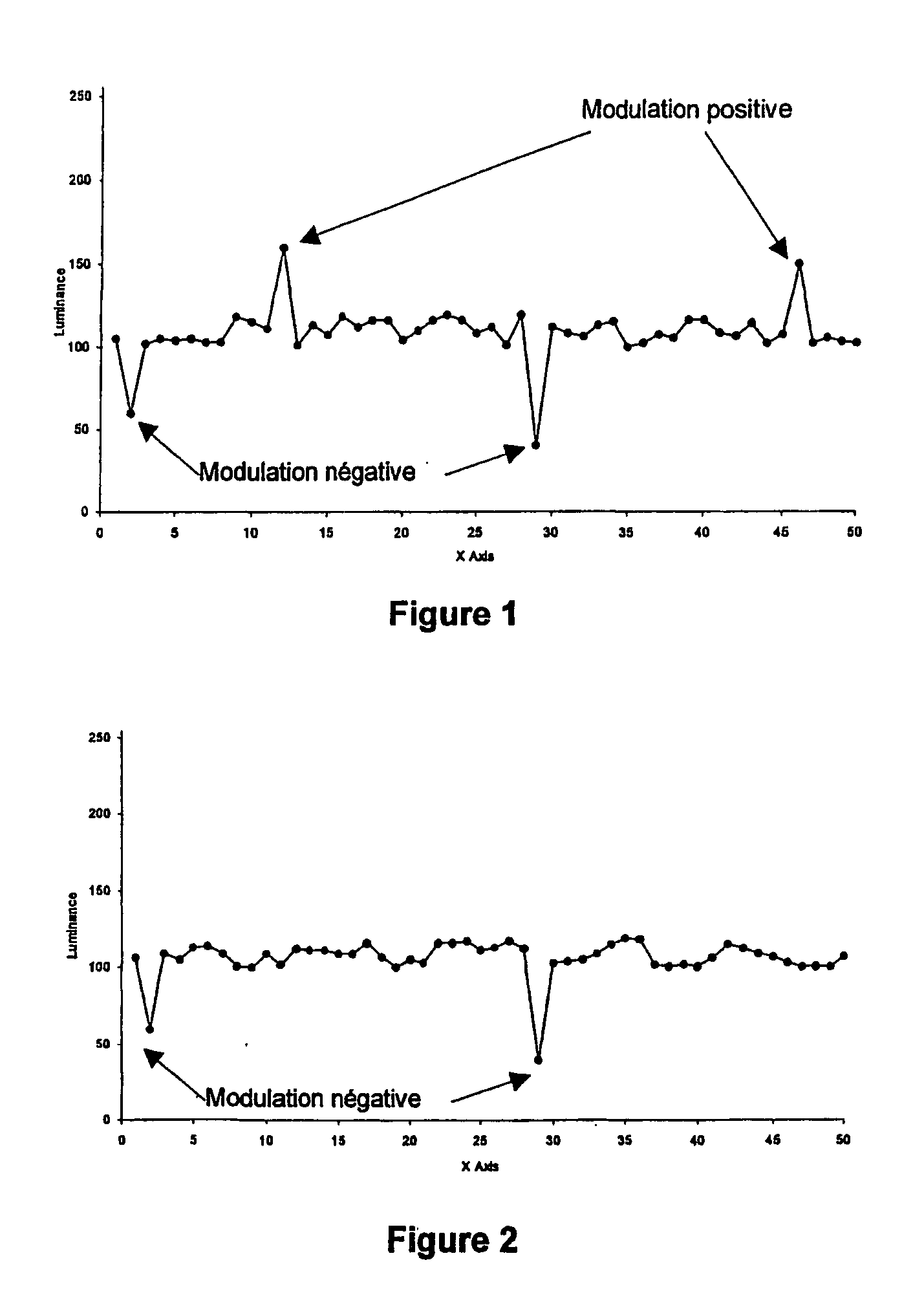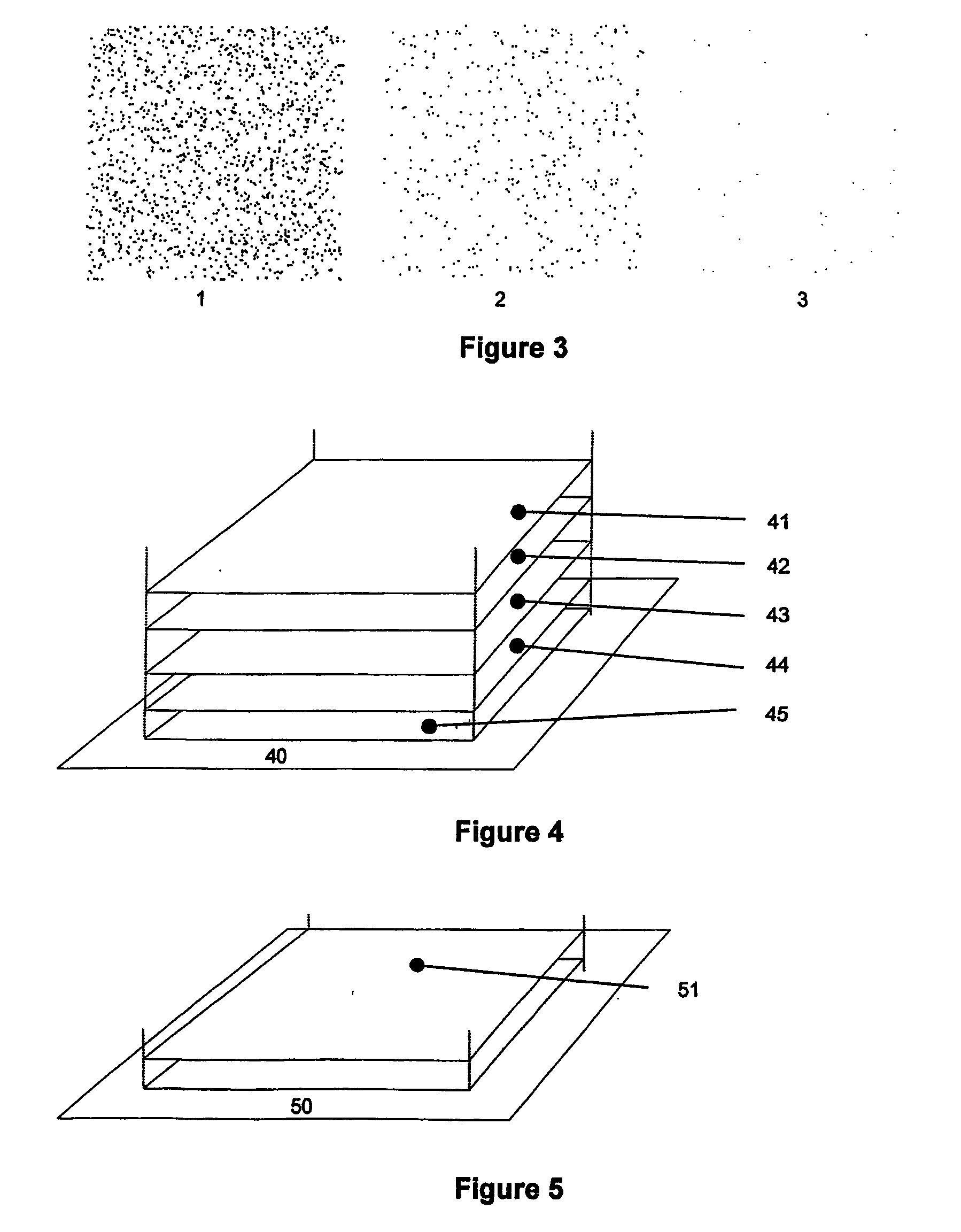Method for preventing counterfeiting or alteration of a prited or engraved surface
a technology for counterfeiting, which is applied in the field of methods for preventing counterfeiting or alteration of prited or engraved surfaces, which can solve the problems of striking visual differences between the original and the copying feature, difficult reproduction of special motifs and other decorative features, and appearance that disturbs the aesthetics of protected products
- Summary
- Abstract
- Description
- Claims
- Application Information
AI Technical Summary
Benefits of technology
Problems solved by technology
Method used
Image
Examples
Embodiment Construction
[0041] The following description is given as an example and refers to the figures in the annex:
[0042] FIG. 1 illustrates an example of a symmetric modulation.
[0043] FIG. 2 illustrates an example of an asymmetric modulation.
[0044] FIG. 3 illustrates examples of an asymmetric mark.
[0045] FIG. 4 illustrates the implementation of the process integrated with offset printing technology.
[0046] FIG. 5 illustrates the implementation of the process with a separate offset printing step.
[0047] FIG. 6 illustrates the implementation of the process with a separate offset printing step.
[0048] FIG. 7 illustrates the implementation of the process with inkjet printer.
[0049] FIG. 8 shows a block diagram of a process to sign a material in three steps.
[0050] FIG. 9 shows a block diagram of a reading process of a uniform image signed in three steps.
[0051] FIG. 10 shows a block diagram of a reading process of a non-uniform image signed in three steps.
[0052] An example of a symmetric modulation is illustrat...
PUM
 Login to View More
Login to View More Abstract
Description
Claims
Application Information
 Login to View More
Login to View More - R&D
- Intellectual Property
- Life Sciences
- Materials
- Tech Scout
- Unparalleled Data Quality
- Higher Quality Content
- 60% Fewer Hallucinations
Browse by: Latest US Patents, China's latest patents, Technical Efficacy Thesaurus, Application Domain, Technology Topic, Popular Technical Reports.
© 2025 PatSnap. All rights reserved.Legal|Privacy policy|Modern Slavery Act Transparency Statement|Sitemap|About US| Contact US: help@patsnap.com



